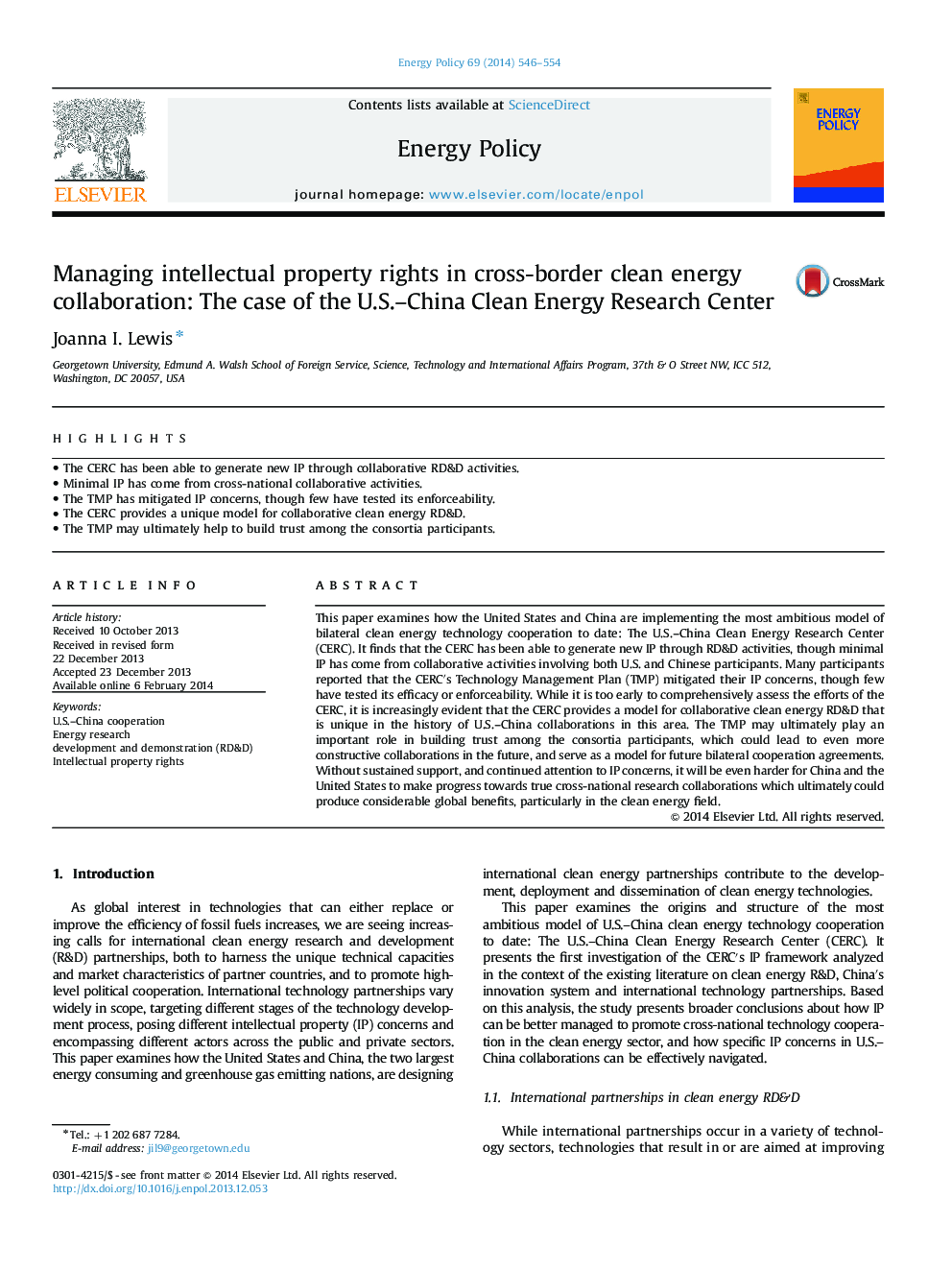| Article ID | Journal | Published Year | Pages | File Type |
|---|---|---|---|---|
| 992930 | Energy Policy | 2014 | 9 Pages |
•The CERC has been able to generate new IP through collaborative RD&D activities.•Minimal IP has come from cross-national collaborative activities.•The TMP has mitigated IP concerns, though few have tested its enforceability.•The CERC provides a unique model for collaborative clean energy RD&D.•The TMP may ultimately help to build trust among the consortia participants.
This paper examines how the United States and China are implementing the most ambitious model of bilateral clean energy technology cooperation to date: The U.S.–China Clean Energy Research Center (CERC). It finds that the CERC has been able to generate new IP through RD&D activities, though minimal IP has come from collaborative activities involving both U.S. and Chinese participants. Many participants reported that the CERC's Technology Management Plan (TMP) mitigated their IP concerns, though few have tested its efficacy or enforceability. While it is too early to comprehensively assess the efforts of the CERC, it is increasingly evident that the CERC provides a model for collaborative clean energy RD&D that is unique in the history of U.S.–China collaborations in this area. The TMP may ultimately play an important role in building trust among the consortia participants, which could lead to even more constructive collaborations in the future, and serve as a model for future bilateral cooperation agreements. Without sustained support, and continued attention to IP concerns, it will be even harder for China and the United States to make progress towards true cross-national research collaborations which ultimately could produce considerable global benefits, particularly in the clean energy field.
